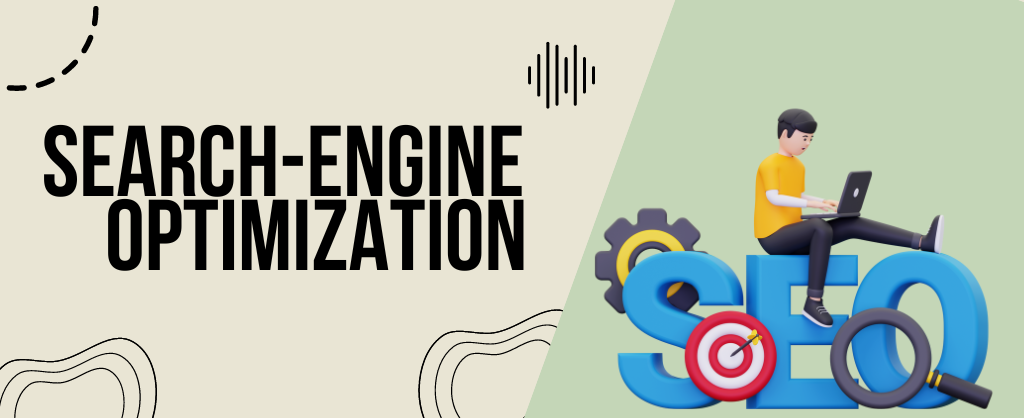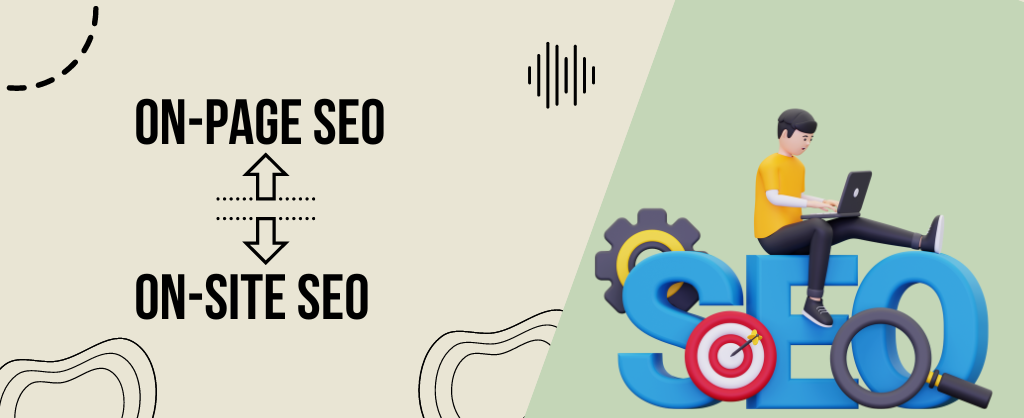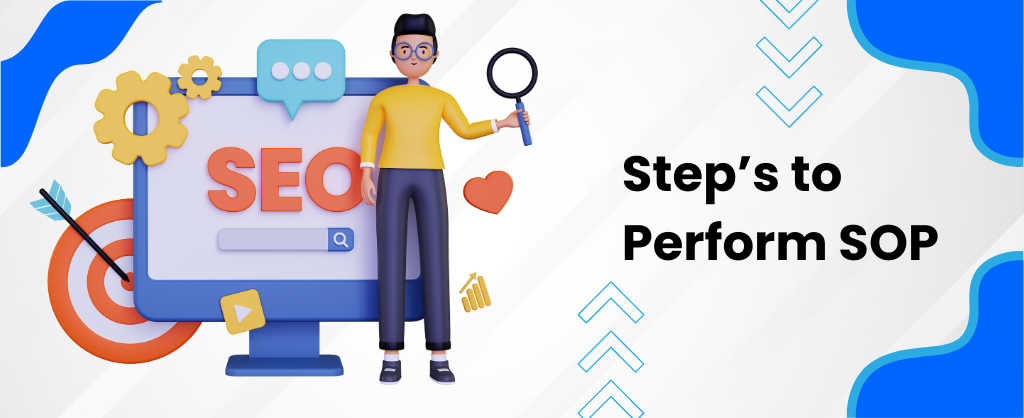
- Date: March 2, 2024
SEARCH ENGINE OPTIMIZATION (SEO) STARTER GUIDE 2024
- 8 min read
- 0 comment

In the dynamic realm of digital marketing, mastering on-page SEO (Search Engine Optimization) is crucial for enhancing your website’s visibility and ranking on search engine results pages (SERPs). As businesses strive to reach their target audience in India’s rapidly growing online landscape, understanding and implementing on-page SEO best practices becomes paramount. In this comprehensive guide, we’ll explore the essentials of on-page SEO, focusing on strategies tailored to the Indian market to ensure maximum visibility and engagement.
On-page SEO refers to the optimization techniques applied directly on your website to improve its search engine ranking and attract organic traffic. By optimizing various on-page elements, such as content, meta tags, and site structure, you can enhance your website’s relevance and authority in the eyes of search engines like Google.

Begin by conducting thorough keyword research to identify relevant search terms and phrases with high search volume and low competition in the Indian market. Incorporate these keywords strategically into your website’s content, including titles, headings, meta descriptions, and body text, to enhance visibility for relevant search queries
Create high-quality, relevant, and engaging content that addresses the needs and interests of your target audience in India. Focus on providing valuable information, solving problems, and answering questions to establish authority and credibility in your niche. Incorporate multimedia elements, such as images, videos, and infographics, to enhance user experience and engagement.
With the majority of internet users in India accessing the web via mobile devices, optimizing your website for mobile responsiveness is crucial. Ensure that your website loads quickly and displays properly on various mobile devices and screen sizes to provide a seamless user experience and improve search rankings.
Pay attention to technical aspects of on-page SEO, such as website speed, crawlability, and site structure. Optimize your website’s performance by compressing images, minifying CSS and JavaScript files, and implementing schema markup to enhance search engine readability and indexing.
Prioritize user experience by optimizing navigation, readability, and accessibility across your website. Create clear and intuitive navigation menus, use descriptive anchor text for internal links, and format content for easy readability. Incorporate elements such as breadcrumbs, sitemaps, and custom 404 pages to enhance usability and keep visitors engaged.
To answer this, we would like to tell you that our priority is customer satisfaction and also our services are affordable for any business be that a small business, startup or big company.

On-page SEO and on-site SEO are both crucial components of search engine optimization (SEO), but they refer to different aspects of optimizing a website for better visibility and ranking on search engine results pages (SERPs). Here’s a breakdown of the differences between on-page SEO and on-site SEO:
On-Page SEO:
Definition-On-page SEO focuses on optimizing individual web pages to improve their search engine rankings and attract organic traffic. It involves optimizing various on-page elements within each page of the website.
Key Elements– Content Optimization: This includes optimizing page titles, meta descriptions, headings (H1, H2, etc.), and body content with relevant keywords. Keyword Optimization: Researching, selecting, and strategically placing keywords throughout the content to improve search engine visibility.URL Structure: Ensuring that URLs are SEO-friendly, concise, and descriptive. Image Optimization: Optimizing images with descriptive filenames, alt text, and appropriate file sizes to improve page loading speed and enhance accessibility
Scope- On-page SEO focuses specifically on optimizing individual web pages and the content within them. It does not encompass broader aspects of website optimization, such as site structure, technical issues, or server configurations.
On-Site SEO:
Definition– On-site SEO, also known as on-site optimization, refers to the broader optimization efforts applied to the entire website to improve its search engine rankings and overall performance. It involves optimizing various on-site elements and technical aspects of the website
Key Elements- Site Structure: Optimizing the website’s structure, navigation, and hierarchy to improve user experience and search engine crawlability.
Technical SEO: Addressing technical issues such as website speed, crawlability, indexing, schema markup, XML sitemaps, and canonicalization.
Mobile Optimization: Ensuring that the website is optimized for mobile devices and provides a seamless user experience across different screen sizes and devices.
URL Canonicalization: Resolving duplicate content issues by specifying the preferred version of a URL and redirecting duplicate or canonical URLs appropriately.
Scope- On-site SEO encompasses a broader range of optimization efforts that extend beyond individual web pages to the entire website. It addresses technical aspects, site-wide issues, and overall website performance to improve search engine rankings and user experience

Optimizing your website for search engines (SEO) is crucial for improving its visibility and ranking on search engine results pages (SERPs). Here’s a simplified guide explaining SEO in 5 steps
Step 1: Keyword Research- Keyword research forms the foundation of SEO. Identify relevant keywords and phrases that your target audience is likely to use when searching for products, services, or information related to your website. Use keyword research tools like Google Keyword Planner, SEMrush, or Ahrefs to discover high-volume, low-competition keywords that align with your website’s content and objectives.
Step 2: On-Page Optimization- On-page optimization is the process of fine-tuning individual web pages to improve their search engine visibility and rankings. It involves strategically optimizing various on-page elements such as title tags, meta descriptions, heading tags, content, and URLs to make them more relevant and authoritative in the eyes of search engines. By incorporating target keywords naturally within the content and meta tags, structuring the page with logical headings, and optimizing URLs for clarity and relevance, on-page optimization ensures that each web page communicates its topic clearly to both users and search engine crawlers.
Step 3: Content Creation- Create high-quality, informative, and engaging content that meets the needs of your target audience. Focus on providing value, answering questions, and solving problems relevant to your niche. Incorporate your target keywords naturally within the content, but avoid keyword stuffing. Use multimedia elements like images, videos, and infographics to enhance user experience and increase engagement.
Step 4: Off-Page Optimization- Off-page optimization, a crucial aspect of search engine optimization (SEO), focuses on activities conducted outside of your website to improve its authority, credibility, and relevance in the eyes of search engines. This includes building high-quality backlinks from reputable and relevant websites, as well as engaging in online networking, social media promotion, and content marketing efforts. Off-page optimization aims to increase your website’s visibility, drive organic traffic, and improve its rankings on search engine results pages (SERPs) by signaling to search engines that your website is trusted and valuable within its industry or niche.
Step 5: Monitoring and Optimization- Regularly monitor your website’s performance using analytics tools like Google Analytics and Google Search Console. Track key metrics such as organic traffic, keyword rankings, backlink profile, and conversion rates. Analyze the data to identify areas for improvement and optimization. Continuously tweak and refine your SEO strategies based on performance insights, algorithm updates, and changes in user behavior to maintain and improve your website’s search engine rankings over time.

In conclusion, mastering on-page SEO is essential for enhancing your website’s visibility and ranking in the competitive online landscape of India. By implementing the on-page SEO essentials outlined in this guide and staying committed to continuous monitoring and optimization, you can establish a strong online presence, attract organic traffic, and drive sustainable growth for your business in India. Embrace the power of on-page SEO, and unlock the full potential of your website in the Indian market.
Finding the best company in Chicago may be tricky sometimes so from where to get detailed information about the matter. To answer this we have one of the best company that is Ytech Raj this company is one of the best in town in 2021 with experienced leaders and smooth services.
For more exciting offers and information contact Ytech Raj.
Currently the form is not available.





